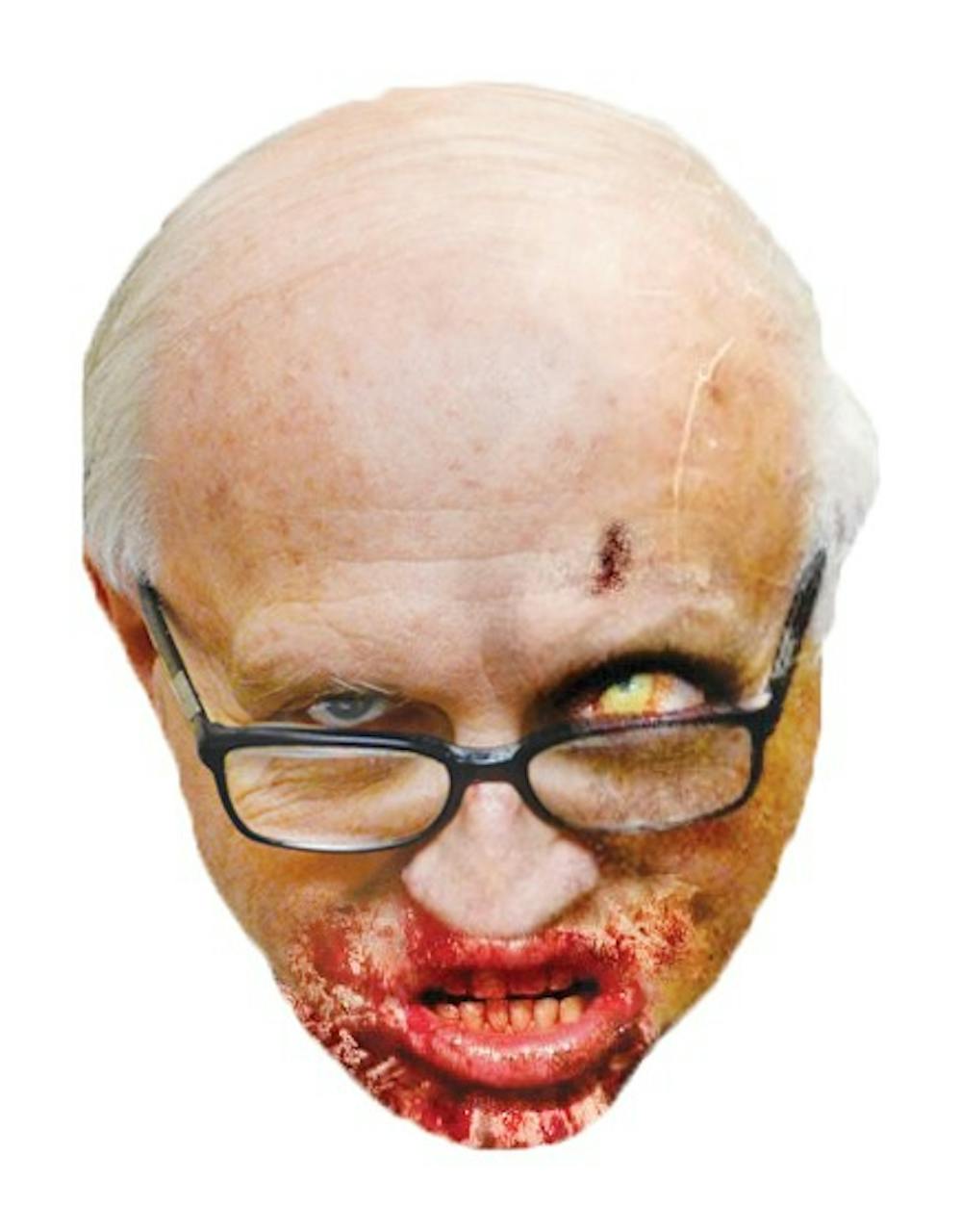Inside the mind of Dr. Dead
Echoes of moaning and grunting creep through dissipating fog on a dark, gloomy night. The pungent aroma of rotting flesh permeates throughout the air. Growls of desperation and hunger grow closer as blood drips from their tattered, disintegrating clothing.
The dead have risen. And they've never been more popular.
Much of today’s horror cinema is filled with horror creatures including vampires, ghosts, werewolves and most importantly – zombies. The living dead have become a popular staple among television shows and film within recent years.
Broadcast and cinematic arts faculty member, Dr. Ken Jurkiewicz, said the reason zombies are so closely related to Halloween is due to the fantasy role-play behind it all.
“Halloween, especially in modern times, is associated with partying and this idea of fantasy role-playing,” Jurkiewicz said. “With the emphasis of days getting shorter and nights getting longer, why not? It’s one more time to go out, and one more excuse to have a good time.”
Zombies originated from Haitian folklore, Jurkiewicz said. A zombie is someone who has died or is very close to death, and is coming back without self-control or willpower.
Director George Romero’s classic, low-budget horror film, “Night of the Living Dead,” broke the barriers of mainstream cinema and set the bar high for future imitations and remakes of zombie films.
“It violated all the rules of mainstream filmmaking, not to mention horror films,” Jurkiewicz said. "The idea was that it pushed the envelope and broke the envelope. Never in the history of movies did you go to the movies and see the kinds of things that are physically portrayed directly head-on.”
Seeing the first genuine zombie horror film was influential to Jurkiewicz. As an undergraduate in college, he was advised to see the movie by a former co-worker.
“I went, and literally everybody was shocked, blown away and exhilarated by the experience,” he said. “Nobody had ever seen anything like it before. It was cheap, cheesy at times and not particularly well acted, but it doesn’t make any difference. The film experience itself was like being bombarded by the zombie force.”

“As the audience’s interests change, and as their fears and anxieties change, so too do these symbols,” Jurkiewicz said. “Chances are, like every epidemic, it’s going to phase out. Something else will come along.”
Economic collapses and social fears are what added to the growing interest of zombie films, Jurkiewicz said, and serve as inspirations for the tone and metaphors in the stories.
“We can directly connect this fascination and overwhelming popularity of zombie films and TV shows on the economic collapse between 2008 and 2009,” Jurkiewicz said. “The vast majority of people feel that they have no control over superior forces. How do you fight zombies? The best you can do is survive.”
Freeland senior Evan Greskowiak thinks zombie movies are both classic and innovative.
“I like zombies because they’re not the normal villain,” Greskowiak said. “They’re not the normal bad guy that tries to rob a bank. They’re a new kind of villain.”
Greskowiak has noticed the increasing number on zombie films out on the market.
“It seems like they hit a good spot and the zombies are just becoming too computer generated these days,” he said. “They’re becoming a fad, they’re really popular now. However, my favorite zombie TV show would have to be 'The Walking Dead,' and movie 'Warm Bodies.' I liked 'Warm Bodies' because it was an alternative to the normal.”
Dr. Patty Williamson, broadcast and cinematic arts faculty member, compared today’s zombies vs. Romero’s back in 1968. Today there are many different variations of zombies that filmmakers use to entertain the newer generation, she said.
“In some ways the zombies are similar,” Williamson said. “Before Romero, zombies were more like voodoo characters and slaves to a mad scientist. Today’s zombies are more of an infected zombie, stemming from some sort of infection or poisoning that’s happened, and then we need to figure out what the cure is for that. Romero started that idea that the zombies are somehow infected and that they keep coming after you.”
Craving human flesh and marching toward victims with a slow stride is a common element among all zombies, Williamson said.
“What makes them scary is that nothing impacts them, other than something through the head or a silver bullet or whatever people come up with,” Williamson said. “You can’t reason with them, they have no reason or emotion. It’s not like a vampire where you can appeal to emotion, common sense or humanity. Zombies are not the undead, they’re dead. There is no consciousness anymore.”




